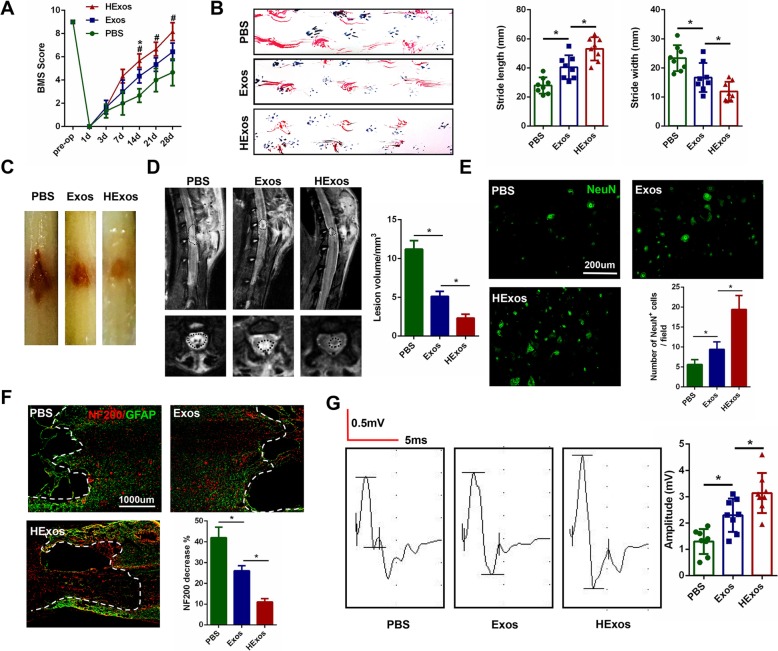Fig. 2.
HExos administration promoted functional behavioral recovery following SCI in vivo.a BMS was used to functionally grade the mice in the PBS, Exos and HExos groups up to 28 days post-injury (n = 8/group). b Representative footprints of an animal walking 28 days after SCI and quantification of the footprints analysis findings in each mouse. Blue: frontpaw print; red: hindpaw print (n = 8/group). c Gross morphology of spinal cord (n = 8/group). d Representative sagittal and coronal MRI images (n = 3/group). e Representative immunostaining images of the NeuN-positive cells in different groups after SCI and the number of NeuN-positive cells were calculated (n = 8/group). f Representative immunostaining images of NF200 (red) and GFAP (green) in the injured lesion areas of spinal cord at day 28 post-injury. The dashed lines indicate the lesion boundaries (n = 8/group). g MEP analysis was performed as an electrophysiological assessment in different groups at day 28 post-injury (n = 8/group). *P < 0.05 between the PBS and Exos groups, #P < 0.05 between the Exos and HExos groups

